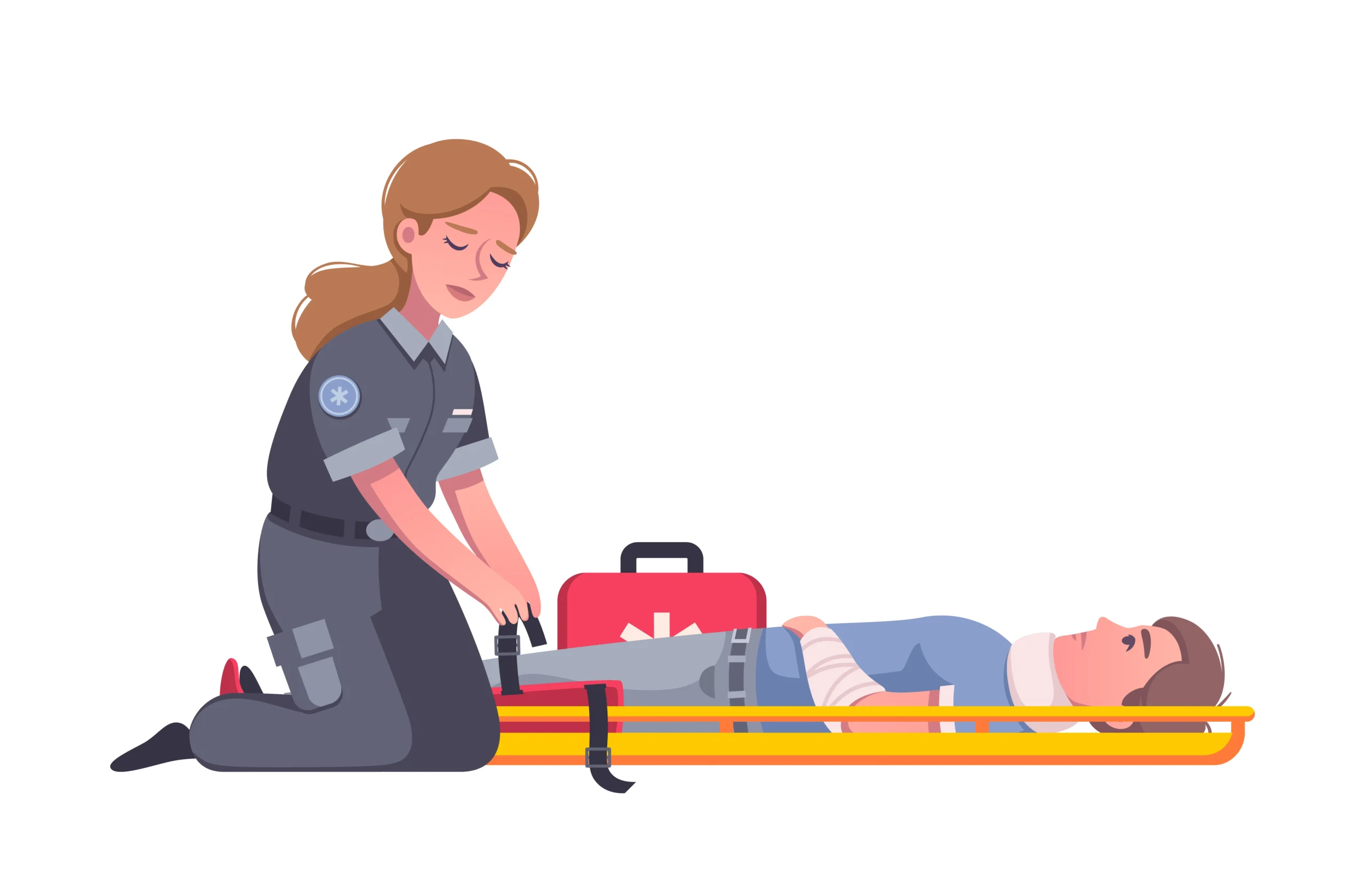Introduction
Cardiopulmonary resuscitation (CPR) is a crucial life-saving technique that can make the difference between life and death in emergency situations. Knowing how to perform CPR correctly can help maintain vital blood flow to the brain and heart when a person’s heartbeat or breathing has stopped. Whether you’re a trained professional or a bystander, understanding how to perform CPR is essential for providing immediate help to someone in need. In this article, we’ll discuss the steps for performing CPR, explain why it’s so important, and provide tips on how to ensure you’re doing it effectively.
What is CPR and Why is It Important?
CPR, or cardiopulmonary resuscitation, is an emergency procedure used when someone’s heart has stopped beating or they have stopped breathing. The goal of CPR is to manually pump the heart and provide rescue breaths to keep oxygen-rich blood flowing to the brain and other vital organs until professional medical help arrives.
The Role of CPR in Emergencies
During cardiac arrest, the heart’s ability to pump blood is compromised. CPR helps maintain circulation by performing chest compressions that mimic the heart’s pumping action. In combination with rescue breaths, CPR can help keep the blood oxygenated and increase the chances of survival and recovery.
When Should You Perform CPR?
CPR should be performed when a person is unresponsive, not breathing, or not breathing normally (e.g., gasping). Common situations requiring CPR include heart attacks, drowning incidents, choking, or other circumstances leading to cardiac arrest.
Preparing to Perform CPR: Safety First
Before you begin CPR, it’s crucial to ensure the safety of both yourself and the person in need.
1. Check the Scene and Person
Make sure the environment is safe for you to approach. Check for any hazards like traffic, fire, or dangerous debris. Once you determine it is safe, check if the person is responsive by gently tapping them on the shoulder and asking loudly, “Are you okay?”
2. Call for Help or Send Someone to Call 911
If the person does not respond, call 911 immediately or instruct someone nearby to make the call. Explain the situation and provide the location. The emergency dispatcher can guide you through the process while professional help is on the way.
3. Assess Breathing
Check for breathing by observing the chest for any rise and fall for at least 5 to 10 seconds. If there is no breathing or only gasping, it’s time to start CPR.
How to Perform CPR: Step-by-Step Instructions
Performing CPR correctly involves a combination of chest compressions and rescue breaths. Here is a step-by-step guide to ensure you administer CPR effectively:
Step 1: Position Your Hands
Kneel beside the person’s chest. Place the heel of one hand on the center of their chest, just above the sternum. Put your other hand on top, interlocking your fingers. Keep your elbows straight, and position your shoulders directly above your hands.
Step 2: Start Chest Compressions
Use your body weight to compress the chest at least 2 inches deep for adults and 1.5 inches for infants. Aim for a rate of 100 to 120 compressions per minute. Allow the chest to fully recoil between compressions to maximize blood flow.
- Tip: To maintain the correct rhythm, you can compress to the beat of a song like “Stayin’ Alive” by the Bee Gees.
Step 3: Open the Airway
After 30 compressions, check the person’s airway by tilting the head back slightly and lifting the chin. This position helps open the airway to allow for proper ventilation.
Step 4: Provide Rescue Breaths
Pinch the person’s nose shut and cover their mouth with yours, creating an airtight seal. Give two slow, steady breaths, each lasting about 1 second. Watch to see if the chest rises with each breath, indicating that air is reaching the lungs.
- Note: If the chest does not rise, re-tilt the head, check for obstructions, and try again.
Step 5: Continue the Cycle of Compressions and Breaths
Continue performing cycles of 30 chest compressions followed by two rescue breaths until medical help arrives, the person starts to breathe, or you are too exhausted to continue.
Hands-Only CPR: An Alternative Approach
In some situations, such as during the COVID-19 pandemic or if you are not trained in rescue breathing, performing hands-only CPR is a valid option. Hands-only CPR involves just chest compressions without rescue breaths and can still be effective in maintaining circulation.
How to Perform Hands-Only CPR
- Ensure the scene is safe.
- Call 911 or have someone call for you.
- Begin chest compressions at a rate of 100 to 120 compressions per minute, pushing hard and fast in the center of the chest.
- Continue until help arrives or the person regains consciousness.
Special Considerations When Performing CPR
Certain situations may require adaptations to the standard CPR procedure. Here are some special considerations:
CPR for Infants and Children
For infants (under 1 year) and children (1–8 years), CPR techniques differ slightly:
- Infants: Use two fingers for chest compressions instead of the full hand, and compress about 1.5 inches deep.
- Children: Use one or two hands for chest compressions, depending on the size of the child, and compress about 2 inches deep.
Using an Automated External Defibrillator (AED)
An AED can help restore a normal heart rhythm in cases of sudden cardiac arrest. If an AED is available:
- Turn it on and follow the voice instructions.
- Attach the pads as directed, one on the upper right chest and one on the lower left side.
- Ensure no one is touching the person, then press the shock button if advised.
CPR for Drowning Victims
When performing CPR on a drowning victim, prioritize giving rescue breaths. Begin with five initial rescue breaths before starting chest compressions, as drowning victims often suffer from oxygen deprivation.
Common Mistakes to Avoid When Performing CPR
While CPR is a relatively simple procedure, it’s easy to make mistakes. Here are some common errors to avoid:
1. Inadequate Depth of Compressions
Failing to compress the chest deeply enough can reduce the effectiveness of CPR. Ensure you push hard and fast to maintain adequate blood circulation.
2. Interrupting Compressions Frequently
Interruptions in chest compressions can decrease the likelihood of survival. Try to minimize pauses, even when switching between compressions and rescue breaths.
3. Not Checking for Obstructions in the Airway
If rescue breaths do not cause the chest to rise, the airway may be obstructed. Quickly check for visible obstructions and adjust the head tilt as necessary.
Conclusion
Knowing how to perform CPR can be a life-saving skill in emergencies. By understanding the correct techniques for chest compressions and rescue breaths, you can help maintain vital blood flow to the brain and heart until professional medical help arrives. Remember, it’s crucial to act quickly, follow the steps carefully, and avoid common mistakes to maximize the chances of survival.
While CPR training and certification provide the most comprehensive knowledge, even basic awareness can make a significant difference. Consider taking a certified CPR course to enhance your skills, stay updated on best practices, and be prepared to save a life when the need arises.
Empowering yourself with this knowledge is a step towards creating safer communities and offering invaluable support in critical situations.


